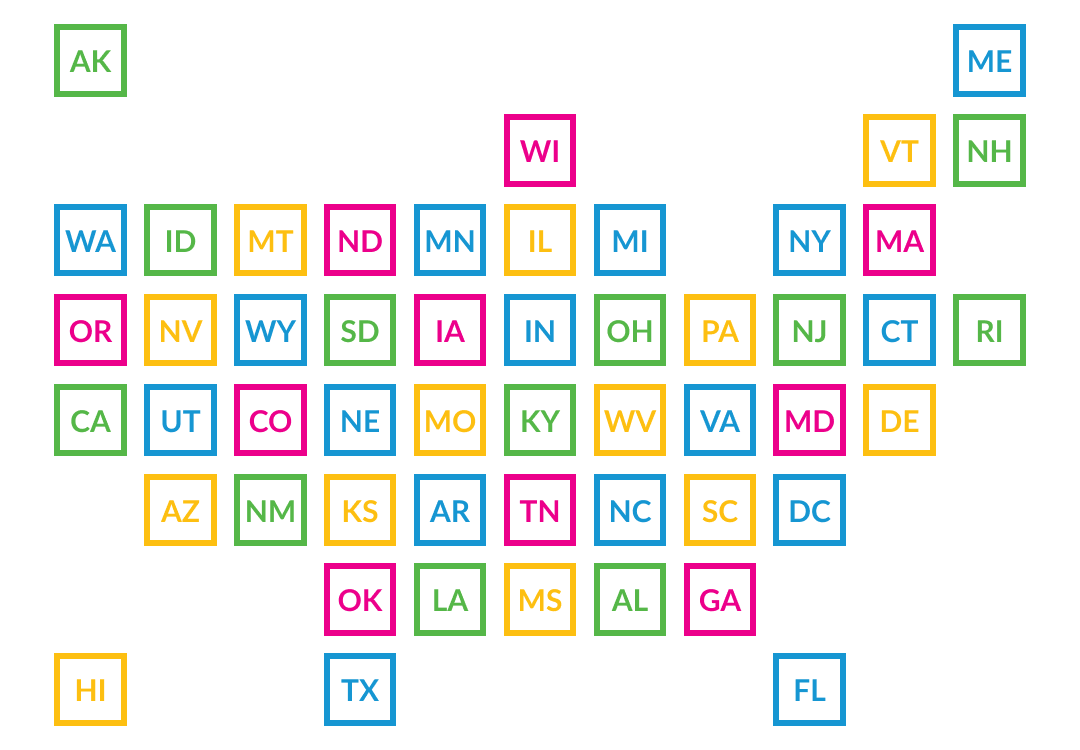
Which Students Receive a Greater Share of School Funding?
Last updated April 25, 2022
Funding for school districts typically flows from the local, state, and federal government, with the aim to provide resources for an adequate education. Although funding levels have generally increased in recent decades, the amount of funding a student experiences varies across states and across student groups.
Increased spending on education can lead to better outcomes for students, but not every state allocates funding equitably to students of different backgrounds. With the tool below, you can explore which students experience higher average funding by household poverty status, geography, or race or ethnicity in each state—and how each share has changed.
Funding progressivity, or how much more is spent on educating students from families with low incomes relative to students from families with higher incomes, has stayed relatively flat for decades. Funding at the local level, which is largely dictated by property taxes, tends to allocate more toward students from families with higher incomes, but state and federal programs attempt to correct for those inequities by filling in funding gaps and allocating more dollars for students from families with low incomes.
Rural schools often face higher costs than urban schools because they have different needs for transportation, technology, and salaries to attract school staff. By looking at funding changes by school geography, we can understand how policymakers balance funding streams between urban, suburban, town, and rural districts.
As a result of school segregation and other discriminatory practices, many students of color do not have educational opportunities equal to those of white students. These data show changes in funding equity, or how school funding is distributed by race and ethnicity, and highlight which students receive the most funding.
Below, you can explore which students experience a greater share of education funding. The chart to the right shows the national average and clicking on a state will add its trend line to the chart. By using the funding stream buttons, you can see how each level of government contributes differently to funding equity. In general, local funding, which comes from property taxes, inequitably allocates funds, whereas states, which have their own funding formulas, typically attempt to correct these inequities. Federal funding, which accounts for less than 10 percent of all funding, is also designed to create equity.
Hide filters


Change in National Funding Share
Compare state funding allocations to the US average. Add up to 5 states.
Interpret with caution*
No data
Change in National Funding Share
Compare state funding allocations to the US average. Add up to 5 states.
:
Selected states (0/5)
Clear all
Note: Hawaii and Washington, DC, are included in the national average calculations, but we cannot calculate funding shares at the state level for either because both are single districts. All statistics exclude charter-only districts and other districts not tied to geography.
Note: Hawaii and Washington, DC are included in the national average calculations, but we cannot calculate funding shares at the state level for either because Hawaii is comprised of a single district, and because Washington, DC does not have different urbanicities. All calculations include available data on charter-only districts and other districts not tied to geography, except for 2019.
Note: Hawaii is included in the national average calculations, but we cannot calculate funding shares at the state level because it is comprised of a single district. All calculations include available data on charter-only districts and other districts not tied to geography, except for 2019.
*Some states are displayed using a gray line because the groups selected make up less than 3 percent of the state’s students. These states are included in the national average calculations but should be interpreted with caution.
 Urban
Urban AIAN
AIAN Local
Local